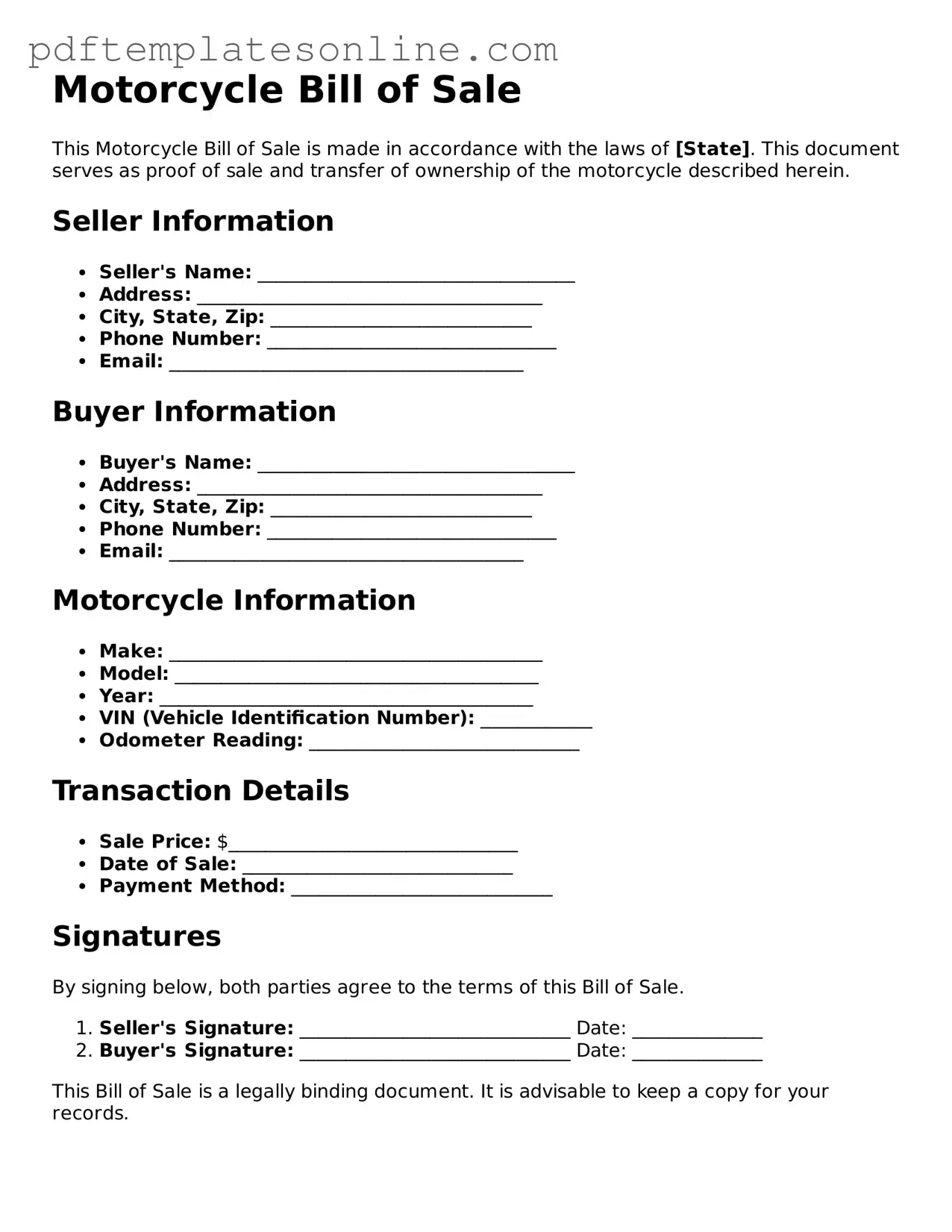When filling out a Motorcycle Bill of Sale form, individuals often make several common mistakes that can lead to complications down the line. One significant error is failing to include all required information. Essential details such as the motorcycle's Vehicle Identification Number (VIN), make, model, year, and odometer reading should be accurately recorded. Omitting any of these elements can create issues when transferring ownership.
Another frequent mistake involves incorrect or unclear signatures. Both the seller and buyer must sign the document to validate the sale. If the signatures are illegible or if one party neglects to sign, the bill of sale may not be considered legally binding. This can lead to disputes or difficulties in registering the motorcycle with the state.
People often overlook the importance of including the date of sale. Without a specific date, it can be challenging to establish when the ownership transfer occurred. This omission can complicate matters if questions arise regarding the timing of the sale, especially in cases of accidents or disputes.
Additionally, some individuals fail to provide adequate contact information for both parties. Including full names, addresses, and phone numbers helps ensure that both the buyer and seller can be reached if any issues arise after the sale. Lack of contact information can hinder communication and resolution of disputes.
Misunderstanding the payment method is another common pitfall. The bill of sale should clearly state how the transaction was completed, whether through cash, check, or another method. If the payment method is vague or not documented, it may lead to misunderstandings regarding the transaction.
People sometimes neglect to indicate whether the motorcycle is being sold "as is." This phrase clarifies that the buyer accepts the motorcycle's condition without warranty or guarantee from the seller. Failing to include this detail can lead to disputes over repairs or defects after the sale.
Moreover, individuals may not keep a copy of the completed bill of sale. It is essential for both parties to retain a copy for their records. Without a copy, proving ownership or the terms of the sale can become problematic.
Lastly, some individuals do not check for local regulations regarding the bill of sale. Different states may have specific requirements for motorcycle sales, including additional documentation or specific wording. Not adhering to local laws can render the bill of sale invalid.
